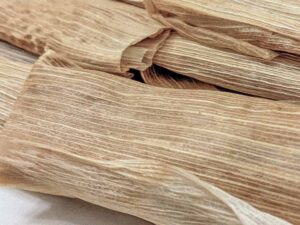—The Inbox—


What Do I Do About Ants by My Plants?

From a Correspondent:
Dear H&F,
Sometime last summer, I began to notice ants in one or two of our garden beds. I was hoping the winter would rid me of them, but no such luck — this year, they’re back with a vengeance. How can I safely get rid of ants without damaging vegetables or using chemical pesticides?
Gratefully,
An Infested Midwestern Gardener
Dear Infested,
The good news is that you are, presumably, both larger and more intelligent than most varieties of ants. I.e., you have them beat in the brawn and brain departments. The bad news is that, according to eminent biologists, there are about twenty quadrillion ants on Earth (and only eight billion humans).
So before commencing a war with a race that outnumbers us 2.5 million to one, let us study on whether you might be able to make peace with the little fellas instead.
Consider: Some bugs are generally bad for the garden — certain sorts of beetles, weevils, aphids, and whatnot. Other bugs are beneficial — butterflies and bees and ladybugs, for instance. Many people, not unreasonably, include ants in the beneficial column.
Ants aerate the soil. (Recall the fascinating network of tunnels in the ant farm you had in third grade.) This helps oxygen, water, and nutrients reach the roots of plants. And ants carry organic matter through their tunnels, some of which decomposes and creates fertilizer. Ants also serve as effective predators, consuming the larvae of various of the bad bugs. Ants can also aid in pollination.
But here’s where things get a bit complicated. One of the bad bugs we’d mentioned is the aphid, a small insect, which sucks liquids out of plants. And ants and aphids have a curious relationship. Some ants like to consume the sweet liquid waste that aphids excrete. In exchange, ants protect aphids from certain predators. Ants even seem to help mitigate the effects of fungal outbreaks (lethal to aphids) by carrying dead, infected aphids away from the healthy ones. You’ll often hear it said that ants “farm” aphids. This may be a bit of anthropomorphic romanticism, but it’s not entirely inaccurate. (Ponder on this the next time someone tells you that animal husbandry is “unnatural.”) Given this symbiotic relationship, you may find that ants and aphids are a bit of a package deal in your garden, and you definitely don’t want aphids.
Also, it is important to identify the type of ant colony you’re dealing with. The common black ant and the yellow meadow ant, for instance, tend to reside in the beneficial column. Whereas carpenter ants, fire ants, and (not surprisingly) leafcutter ants do not. Of course, the quantity matters as well: you said they are “back with a vengeance” — if that means they’ve exhibited a bit of stubborn resilience and increased in number despite the winter, don’t be surprised or necessarily dismayed. Ants can live off of stored fat during the winter, often going into a state of diapause (you don’t get to twenty quadrillion by keeling over every time there’s a cold snap). But if you mean they’ve completely overrun your garden, or if you mean they are of a stinging variety (such as fire ants) and are taking vengeance on you personally, then there is probably more cause for action.
Anyway, the point is that discerning this matter requires some nuance. Given their vast numbers throughout our planet, ants can be hard to get rid of, and you may or may not even want to. It is an oversimplification to say “ants are bad” or “ants are good” for the garden: more details are needed to make the assessment. In fact, some people intentionally introduce ants into their gardens for the benefits mentioned above. So do your homework before doing anything drastic.
But if you’ve gone through all that and still assess that it’s time to take up arms, here are some things you can try:
- If you can find visible ant hills, pour a pot or kettle of boiling water on them. Go back to the kitchen, boil another pot, and repeat. Do this for a few days. Water on its own won’t do much damage (see “rain”), but boiling water will.
- Citrus oils are destructive to ants, as is vinegar. You may find one or the other effective, but if you’re short on time you might as well combine them for a double-pronged attack. Peel some oranges and put the peels in a blender. Add white vinegar, roughly one part orange peel to three parts vingar, and blend thoroughly. Douse ant hills and visible trails with the mixture. Reward your militaristic prowess by eating the oranges.
- Mix ground cinnamon and cayenne pepper, and sprinkle generously around visible colonies and affected plants. The mixture is not lethal, but ants dislike the smell and may thus decide to relocate to less fragrant locales. You can also try this same technique with coffee grounds, which may have other benefits for your garden as well.
- Engage reinforcements: beneficial nematodes can aid in your battle. These small roundworms enter the digestive tract of ants and therein release lethal bacteria, killing ants (and many other pests!) within a day or two of ingestion. Pick some up at your preferred local garden center or farm supply store. They can be sensitive to sunlight and high temperatures, so schedule Operation Nematode for dawn or dusk or a cool, overcast day. Then mix with water per the directions on the package, connect to a pump sprayer or garden hose, and fire at will.
In summary, determine with nuanced consideration whether your hexapod cohabitants are friend or foe. If foe, pick one of the above methods, or all of them, and have at it.
If friend, be glad of the newfound relationship. Instead of concocting pesticides, use your boiling water, orange peels, and cinnamon (and a bit of sugar) to brew a refreshing summer tea. Serve iced. Do not add nematodes.
Hope that helps.
Hearth & Field




















